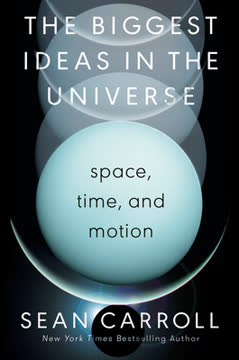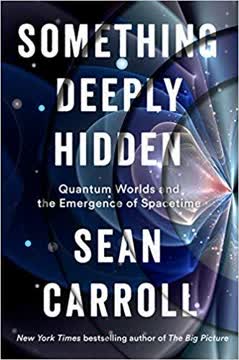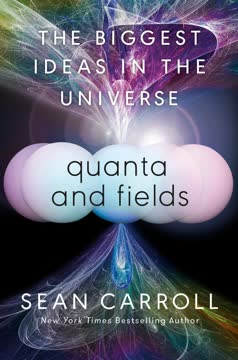Key Takeaways
1. The universe exhibits continuity and predictability, enabling physics
Physics is made possible by the fact that the world exhibits a certain amount of continuity and predictability.
Predictability underpins physics. The universe follows patterns that allow us to make reliable predictions about its behavior. This predictability is not absolute, but it is sufficient to formulate laws of physics that describe how systems evolve over time. The most basic form of predictability is conservation, where certain quantities remain constant despite changes in a system.
Conservation is key. Conservation laws, such as conservation of energy and momentum, are fundamental principles in physics. They allow us to understand and predict the behavior of systems even when we don't know all the details of their internal workings. These laws arise from symmetries in the laws of physics, as discovered by Emmy Noether.
Spherical-cow philosophy. Physicists often use simplified models to understand complex systems. This approach, jokingly referred to as the "spherical-cow philosophy," involves stripping away complications to focus on essential features. While not always applicable to real-world situations, this method has proven incredibly powerful in developing our understanding of fundamental physical principles.
2. Conservation laws are fundamental to understanding physical systems
Remarkably, all of classical mechanics can be cast in this kind of global language, rather than the local chug-forward-in-time perspective that we've been adopting thus far.
Global perspective on mechanics. Classical mechanics can be formulated in terms of global principles, such as the principle of least action, rather than local, step-by-step evolution. This approach provides a powerful way to understand the behavior of physical systems.
Action principle. The principle of least action states that the path a system takes between two points in spacetime is the one that minimizes a quantity called the action. This principle can be used to derive the equations of motion for a wide range of physical systems.
Conservation from symmetry. Noether's theorem connects conservation laws to symmetries in the laws of physics. For example:
- Conservation of energy arises from time translation symmetry
- Conservation of momentum arises from space translation symmetry
- Conservation of angular momentum arises from rotational symmetry
3. Change in physics follows the Laplacian paradigm of deterministic evolution
From the present state of an isolated system, we can predict its future and equally well retrodict its past.
Deterministic evolution. The Laplacian paradigm in classical physics states that if we know the complete state of a system at one moment, we can determine its entire history, both past and future. This principle underlies the concept of reversibility in classical mechanics.
Information conservation. In classical physics, information about a system is conserved over time. This means that, in principle, we can reconstruct the past or predict the future with perfect accuracy if we have complete knowledge of the present state. However, this principle breaks down in quantum mechanics and when we consider entropy.
Calculus as a tool. The development of calculus by Newton and Leibniz provided the mathematical tools necessary to describe continuous change in physics. Key concepts include:
- Derivatives: Describe instantaneous rates of change
- Integrals: Allow us to accumulate infinitesimal changes over time or space
4. Space is the arena where events occur, with unique properties
What's so special about space? Why do position and momentum seem so different to us in practice if they appear somewhat equally in the Hamiltonian laws of physics?
Space vs. momentum. In Hamiltonian mechanics, position and momentum are treated on equal footing as coordinates in phase space. However, our experience of the world makes space seem special. The key difference is that interactions are local in position space, not in momentum space.
Dimensions of space. Our universe appears to have three spatial dimensions. This has profound implications for the behavior of physical systems:
- Gravity follows an inverse-square law in three dimensions
- Stable orbits are possible in three dimensions
- The dimensionality affects the possible types of fundamental forces
Intrinsic vs. extrinsic geometry. The geometry of space can be described intrinsically, without reference to a higher-dimensional embedding space. This concept, developed by mathematicians like Gauss and Riemann, became crucial for Einstein's formulation of general relativity.
5. Time flows asymmetrically due to entropy, not fundamental laws
There is no such thing as "the speed of time" in the same way we talk about speed through space.
Arrow of time. While the fundamental laws of physics are time-symmetric, our experience of time has a clear direction from past to future. This arrow of time arises from the second law of thermodynamics, which states that entropy tends to increase over time.
Entropy and the past hypothesis. The increase in entropy explains why the past and future seem different, but it requires assuming that the universe started in a low-entropy state. This assumption, known as the past hypothesis, is a key part of our understanding of time's arrow.
Time in physics vs. experience. Our subjective experience of time "flowing" is not reflected in the equations of physics. Instead, time is treated as a coordinate, similar to space. The perception of time's flow is likely a result of how our brains process information and memories.
6. Spacetime unifies space and time in relativity theory
In relativity, it's no longer true that space and time have separate, objective meanings. What really exists is spacetime, and our slicing it up into space and time is merely a useful human convention.
Minkowski spacetime. Special relativity describes a unified four-dimensional spacetime, where space and time are intertwined. This leads to effects such as:
- Time dilation: Moving clocks tick slower
- Length contraction: Moving objects appear shorter
- Relativity of simultaneity: Events simultaneous in one frame may not be in another
Light cones and causality. The structure of spacetime in relativity is defined by light cones, which separate events into:
- Timelike separated: Can be causally connected
- Spacelike separated: Cannot influence each other
- Lightlike separated: Connected by light rays
Proper time. The time experienced by an object moving through spacetime is called proper time. It is invariant and represents the actual passage of time for that object, regardless of how it appears to other observers.
7. Geometry provides the mathematical framework for understanding curved spacetime
The metric tensor is the object that will be at the center of our attention when we turn to general relativity.
Riemannian geometry. The mathematics of curved spaces, developed by Bernhard Riemann, provides the foundation for understanding curved spacetime in general relativity. Key concepts include:
- Manifolds: Smooth spaces that locally resemble flat space
- Metric tensor: Defines distances and angles in curved space
- Parallel transport: How vectors change when moved along curves
Curvature tensor. The Riemann curvature tensor fully characterizes the curvature of a space or spacetime. It measures how parallel transport around small loops fails to return vectors to their original orientation.
Geodesics. In curved spacetime, the equivalent of straight lines are geodesics – paths that extremize the distance (or proper time) between two points. Free-falling objects follow geodesics in general relativity.
8. Gravity is the curvature of spacetime according to general relativity
Einstein's equation for general relativity packs a wealth of information into a compact package.
Einstein's field equation. The core of general relativity is Einstein's field equation, which relates the curvature of spacetime (described by the Einstein tensor) to the distribution of matter and energy (described by the stress-energy tensor):
Gμν = 8πG Tμν
Principle of equivalence. Einstein's key insight was that gravity and acceleration are locally indistinguishable. This led him to propose that gravity is not a force, but a manifestation of spacetime curvature.
Predictions and tests. General relativity has made numerous predictions that have been confirmed by observations:
- Bending of light by massive objects
- Gravitational time dilation
- Precession of Mercury's orbit
- Existence of black holes
- Gravitational waves
9. Black holes are extreme consequences of general relativity
There is overwhelming evidence that they exist and play important roles in multiple astrophysical processes.
Event horizon. The defining feature of a black hole is its event horizon, a boundary in spacetime beyond which nothing can escape. For a non-rotating black hole, this occurs at the Schwarzschild radius: r = 2GM/c².
No-hair theorem. Black holes are characterized by only three properties:
- Mass
- Electric charge
- Angular momentum (spin)
All other information about what formed the black hole is lost.
Astrophysical importance. Black holes play crucial roles in the universe:
- Stellar-mass black holes form from the collapse of massive stars
- Supermassive black holes exist at the centers of most galaxies
- Black hole mergers produce detectable gravitational waves
- Accretion disks around black holes power some of the brightest objects in the universe (quasars)
Last updated:
FAQ
What's The Biggest Ideas in the Universe: Space, Time, and Motion about?
- Exploring Modern Physics: The book aims to make modern physics accessible, covering fundamental concepts like space, time, motion, and gravity.
- Three-Part Series: This is the first of a trilogy, focusing on classical physics, with future volumes on quantum mechanics and complexity.
- Engaging with Equations: Sean Carroll emphasizes that equations are tools to summarize relationships in physics, helping readers gain deeper insights.
Why should I read The Biggest Ideas in the Universe?
- Accessible Learning: Carroll's writing is approachable, making complex ideas understandable for non-experts.
- Empathy in Teaching: The author guides readers through confusing concepts with clarity and humor, making the book enjoyable.
- Broadening Perspectives: It can spark interest in physics and encourage discussions about topics like dark matter and quantum mechanics.
What are the key takeaways of The Biggest Ideas in the Universe?
- Conservation Laws: Discusses fundamental laws like conservation of energy and momentum, crucial for understanding physical systems.
- Dynamics and Change: Explains how change is described in physics, emphasizing the importance of calculus in understanding motion and forces.
- Spacetime Concept: Introduces spacetime, merging space and time into a unified framework, essential for grasping modern physics.
How does Sean Carroll explain the concept of spacetime in The Biggest Ideas in the Universe?
- Unified Framework: Spacetime is a four-dimensional continuum combining space and time into a single entity.
- Curvature of Spacetime: Gravity is described as a curvature of spacetime caused by mass, revolutionizing our understanding of interactions.
- Implications for Physics: Emphasizes the need to rethink classical mechanics and embrace a holistic view of the universe.
What is the conservation of energy as explained in The Biggest Ideas in the Universe?
- Definition of Conservation: Energy in a closed system remains constant over time, changing forms but not in total amount.
- Practical Examples: Illustrates with examples like a falling wineglass, showing energy transformation from potential to kinetic.
- Mathematical Foundation: Energy is a property associated with objects based on their states, crucial for analyzing physical systems.
What is the twin paradox mentioned in The Biggest Ideas in the Universe?
- Thought Experiment: Involves two twins, one traveling at near-light speed and the other on Earth, with the traveling twin aging slower.
- Time Dilation Explained: Illustrates that time is experienced differently based on velocity and gravitational field.
- Real-World Implications: Supported by experimental evidence, confirming predictions of Einstein's theory.
How does The Biggest Ideas in the Universe address the concept of time dilation?
- Gravitational Time Dilation: Time runs slower in stronger gravitational fields, confirmed by experiments.
- Relative Experience of Time: Different observers experience time differently based on motion and gravitational field.
- Practical Examples: GPS technology relies on corrections for time dilation effects, showing practical implications.
What is the principle of least action as described in The Biggest Ideas in the Universe?
- Core Concept: The path taken by a system minimizes the action, providing a framework for deriving equations of motion.
- Hamiltonian Mechanics: Connects to Hamiltonian mechanics, where the Hamiltonian represents total energy.
- Applications in Physics: Has practical implications for understanding a wide range of physical systems.
What does The Biggest Ideas in the Universe say about black holes?
- Curvature of Spacetime: Black holes are regions where gravity is so strong that nothing can escape, due to spacetime curvature.
- Event Horizon Concept: The event horizon is the boundary beyond which events cannot affect an outside observer.
- Singularity and Physics: Discusses the singularity where current physical theories break down, highlighting the need for quantum gravity.
What is the principle of equivalence discussed in The Biggest Ideas in the Universe?
- Foundation of General Relativity: States that locally, gravity effects are indistinguishable from acceleration.
- Implications for Physics: Leads to understanding gravity as a curvature of spacetime, not a traditional force.
- Experimental Verification: Confirmed through experiments, reinforcing its significance in modern physics.
What are the best quotes from The Biggest Ideas in the Universe and what do they mean?
- “Just because I don’t want to be a professional race-car driver doesn’t mean I shouldn’t be allowed to drive at all.”: Encourages exploring physics without intimidation.
- “Equations are not that scary.”: Reassures that equations summarize relationships, demystifying mathematics.
- “The universe is stranger than we can imagine.”: Reflects the theme that complexities often defy intuition, embracing modern physics mysteries.
How does The Biggest Ideas in the Universe explain the relationship between space and time?
- Interconnected Concepts: Space and time are part of a unified spacetime framework, crucial for understanding modern physics.
- Dimensionality of Spacetime: Spacetime has four dimensions, affecting perception of motion and interactions.
- Impact on Physics: Encourages rethinking classical mechanics and embracing a holistic view of physical phenomena.
Review Summary
The Biggest Ideas in the Universe aims to bridge the gap between popular science books and academic textbooks by explaining physics concepts with equations while remaining accessible. Many readers appreciated Carroll's approach, finding it illuminating and challenging in a good way. However, some felt the math was still too advanced for the intended audience. The book covers classical mechanics, relativity, and black holes, building up to Einstein's field equations. Readers generally found it thought-provoking, though opinions varied on how successfully it achieved its goals.
Middle Earth Series Series
Similar Books
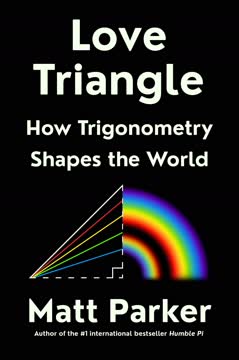
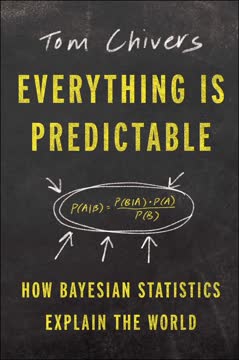

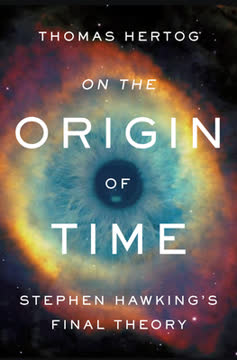

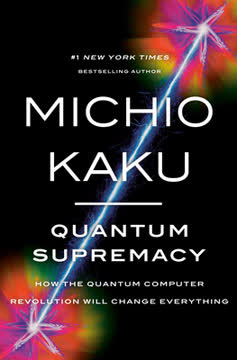
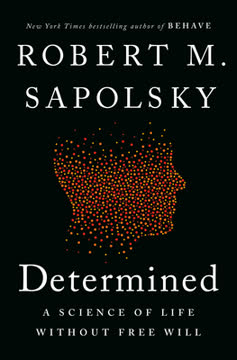
Download PDF
Download EPUB
.epub digital book format is ideal for reading ebooks on phones, tablets, and e-readers.
